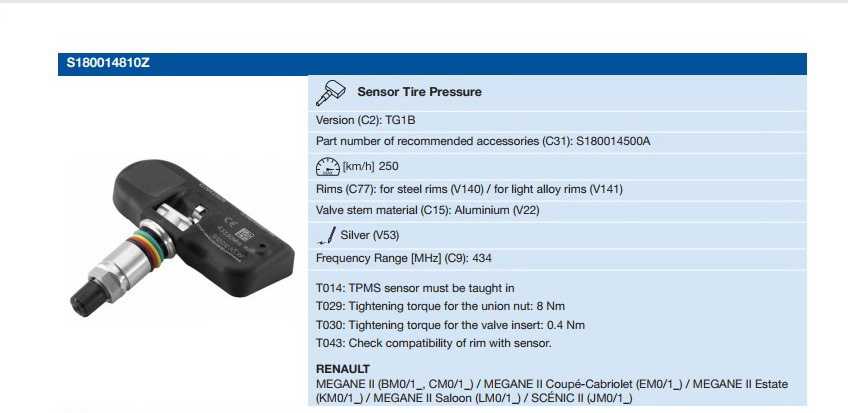What is TPMS? Well, TPMS is short for Tire Pressure Monitoring System. This is a feature that has altered the dynamics of tire maintenance in recent times. How? Your vehicle’s TPMS system keeps tabs on the air pressure in your vehicle’s tire(s) and lets you know when it is too low for comfort. As such, it has made it much easier for manufacturers, drivers, and mechanics to get the most from vehicle tires; that’s why more people want to know how to program TPMS sensors. The TMPS system is comprised of sensors or pressure traducers that convey crucial information like air pressure, battery state, temperature, and sensor location to the vehicle’s computer.
When the TPMS system detects that your car tire(s) has become extremely low, it triggers a warning light on the dashboard. Ignoring this light increases the risks of patchy tire wear, poor brake performance, and, ultimately, reduced vehicle handling. To avoid this, you need to have functional TPMS sensors in your vehicle.
So if you want to know how to program tpms sensors Toyota, for instance, the information you need is in the rest of the article.
Since you are reading this article, the chances are high that you are looking to take the DIY approach to program your vehicle’s TPMS sensors. It might be challenging when you don’t know how but with the right tools and information, you will get the hang of it with time. How to activate new tpms sensor without a tool? That’s not the focus of this article. Instead, this article will show you how to program TPMS sensors using specialized tools. As for the information you need, here are some things you should know before programming your TPMS sensors.
Modern cars come with any of these types of TPMS systems: indirect and direct systems. The indirect system utilizes an ABS that records accurate tire pressure readings by monitoring the wheel speed. It can be found in some Asian and European car brands, so if you are looking for how to program tpms sensors honda, take note because you might need to perform a relearn procedure with this TPMS system.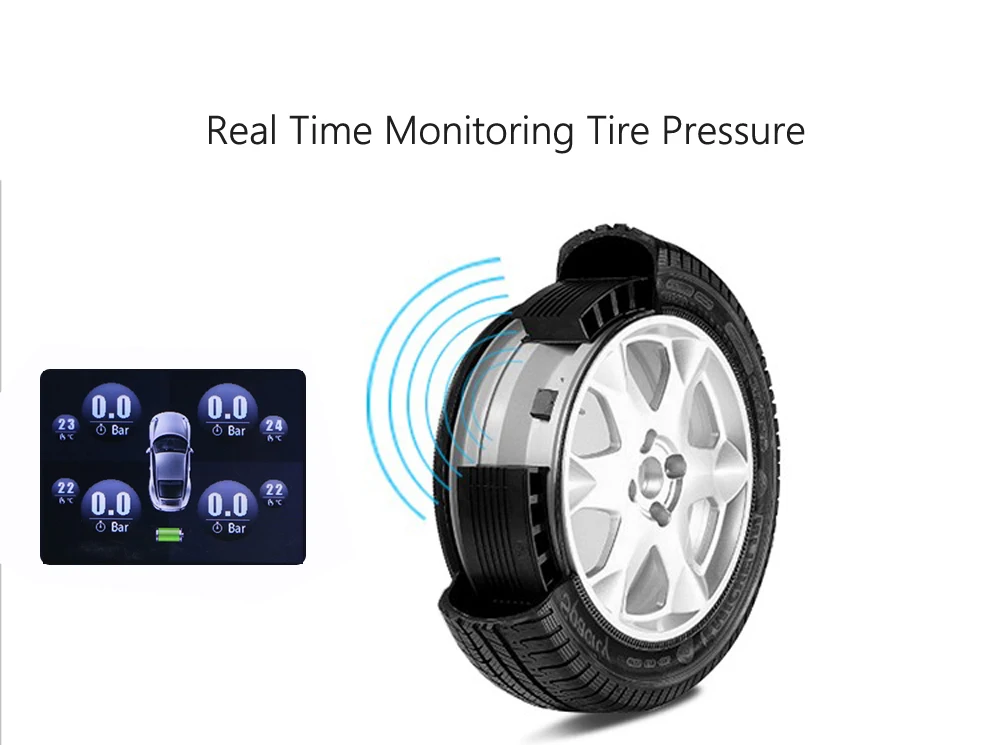
On the other hand, direct TPMS systems utilize TPMS sensors situated inside the vehicle’s wheel. These sensors transmit the tire pressure data to the vehicle’s computer in real-time. You can find the direct TPMS system in European and Asian as well as American car brands. It is the TPMS system you will most likely encounter if you are interested in information on how to program tpms sensors Ford f150 or how to program tpms sensors BMW. However, you don’t need to be overly bothered with this because all you need is the right TPMS scan tool that can easily detect the type of TPMS system and show you how to go through with programming the TPMS sensors.
That said, here’s how to program your vehicle’s TPMS sensors.
This is the very first step on how to program tpms sensors Nissan. Programming your vehicle’s TPMS sensor is impossible without a TPMS programming and diagnostic tool that comes with updated software. Once the tool’s software is updated, you can take advantage of the regular manufacturer software updates that make the programming task more manageable.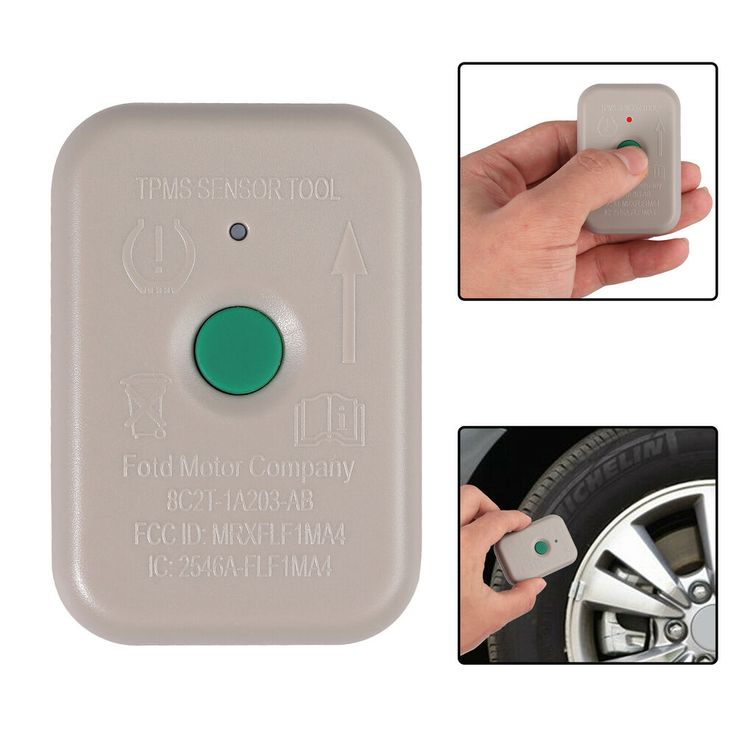
You probably saw the TPMS sensor light because one of the TPMS sensors on the wheel is blank or faulty. You will need to locate the sensor, and one of the best ways to do that is to use a TPMS scan tool. Finding the sensor will require you to scan each of the sensors’ IDs on the vehicle’s wheels. Take the time to scan wheel after wheel until you get the “no sensor detected” message from the tool. That lets you know the location of the sensor on the vehicle.
One thing to note if you want to know how to program tpms sensors Lexus is that each TPMS sensor comes with an ID number that is programmed into the vehicle’s computer. To get the ID number of the sensor, you might need to scan the car with the diagnostic tool. This enables you to access the ID numbers fed into the body control module or the TPMS module. Thus saving you time and allowing you to get the right ID sensor number. Without programming the right ID number on the TPMS sensor, you will be rendering it invalid as the vehicle’s TPMS system won’t detect it.
To program a new blank sensor, you will need to follow the program sensor menu steps on the TPMS programming tool you are using. Start by selecting the model and year of your vehicle on the tool. So if you were looking for how to program tpms sensors ford, for example, you should select Ford’s model and year. You then select the “Enter” option to proceed.
You will get several options after that stage, but you want to choose the “Copy Sensor” option. After doing this, you will get two options, but the one to select is the one that says “input ID”. You then follow the arrow on the tool to input the sensor ID number.
The next step is to fit the TPMS sensor into the programming tool. Ensure that the TPMS sensor is of the right frequency before you proceed. Depending on the programming tool you use, there should be pins in it that fit right into tiny holes in the TPMS sensor. Push the TPMS down until it latches into the pins and is firmly held in place. You then secure it with the safety latch. Once the sensor’s frequency matches that of the tool, the sensor is automatically programmed with the ID number. You can get some help from this YouTube Video.
You then secure it with the safety latch. Once the sensor’s frequency matches that of the tool, the sensor is automatically programmed with the ID number. You can get some help from this YouTube Video.
Yes, you can! All you need are the specialized tools and loads of relevant information on how to go about programming your vehicle’s TPMS. So if you have been planning on how to program tpms sensors Subaru without seeing a mechanic, rest assured. You can program your own TPMS. You just need the know-how.
That all depends on how you go about it. If you choose to get it done at a repair shop, the costs will depend on the store’s location and the kind of services offered there. For example, the cost of reprogramming the TPMS sensor at an upscale repair shop in New York will differ from the costs at an Alabama repair shop.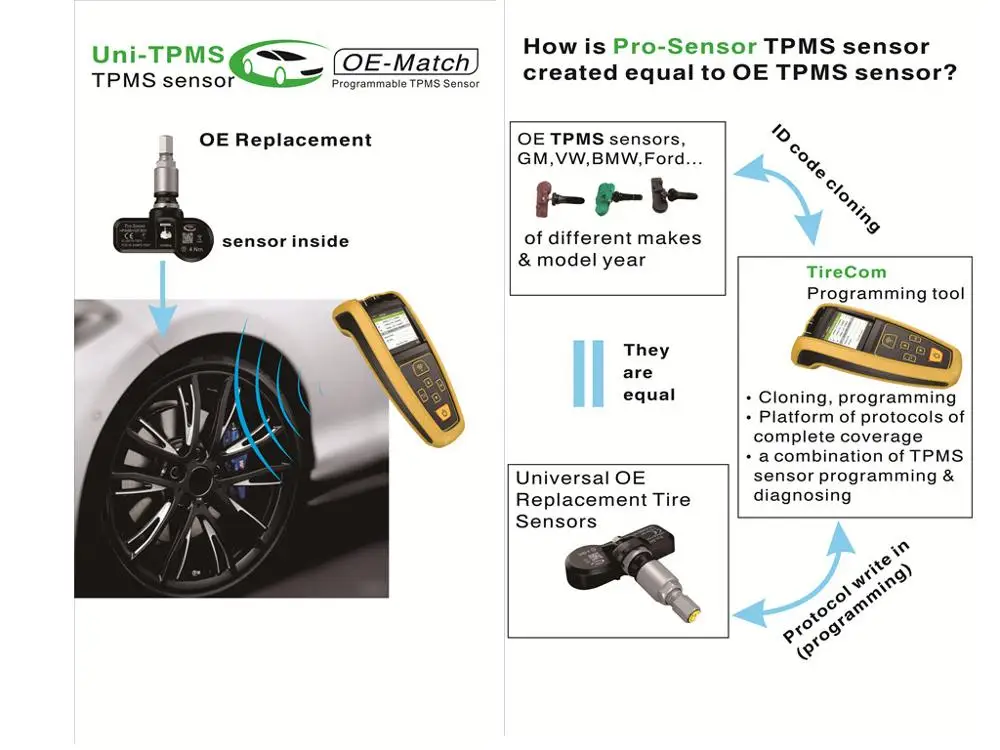
Then you might choose to go the DIY way. This option is arguably the cheaper option as you don’t get to pay a service charge. The things you will be paying for are the tools you use and probably the resources from where you got the necessary information on how to go about it.
Yes, you do. After you must have programmed the TPMS sensors, you will need to write a new TMPS sensor ID to the vehicle’s ECU. This process is known as a “relearn procedure” and can only be executed with a TPMS relearn tool.
Well, it depends on the TPMS sensors. For programmable or configurable sensors, yes. These sensors are designed to be programmed or cloned from an OEM or another aftermarket sensor before they can be used in a vehicle. Otherwise, they won’t be recognized by the vehicle’s TPMS system.
Multi-application TPMS sensors, on the other hand, do not need to be programmed because they already come with the programming necessary to work with the vehicle’s TPMS.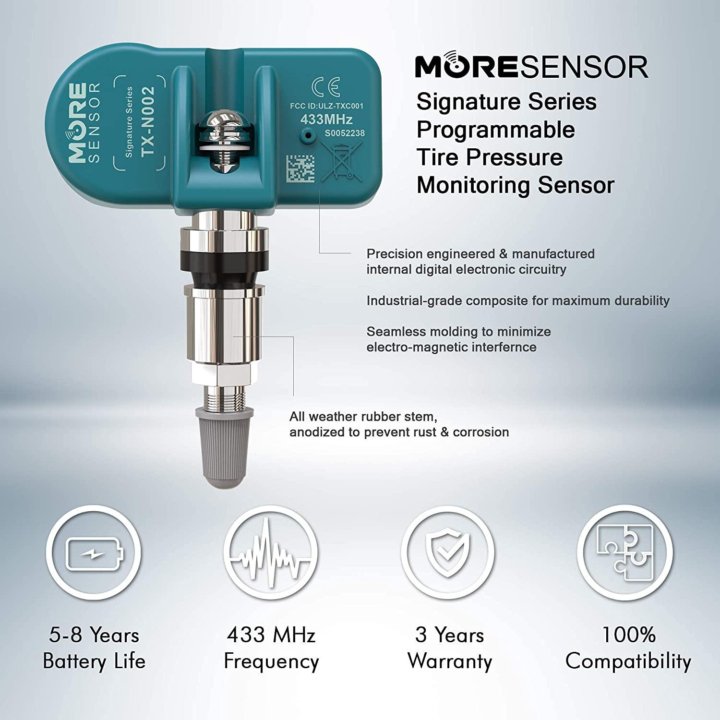 These sensors help save time while reducing costs.
These sensors help save time while reducing costs.
Driving around in a vehicle with blank TPMS sensors is not the end of the world, but it could lead to avoidable situations.
One great feature that modern vehicles have is the TPMS reset button. This button allows vehicle owners and mechanics to reset the TPMS system easily. You can find the TPMS reset button beneath the steering wheel for most vehicles. However, if you cannot find it there, try looking up the vehicle’s owner’s manual.
Tire pressure monitoring systems (TPMS) have saved many motorists from unnecessary costs and vehicular accidents. A functional TPMS system will alert a driver when the tires have less than optimal tire pressure. This protects the tires from blowing out and causing any complications that might lead to a vehicular accident. That is why your vehicle’s TPMS system must always be working. The TPMS sensors have to be programmed to ensure this, or the vehicle’s computer will not detect them.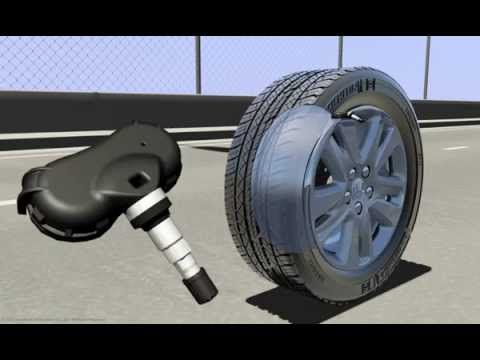 This means that you don’t get to know when your tire(s) is under-inflated.
This means that you don’t get to know when your tire(s) is under-inflated.
The best part about servicing TPMS sensors is that you can do it yourself and save some money. You just need the right parts, the right tools, and the right information. There are loads of online and offline stores to get the right parts and tools. You can get the right information on how to program tpms sensors from reading articles like this one on the internet.
Read More:
Servicing TPMS equipped vehicles profitably can be a challenge without the knowledge, the right parts and the right tools. In spite of all the training programs and technical articles on the subject, there is still a lot of misunderstanding about TPMS, and the confusion between vehicle relearn and sensor programming tops the list.
Vehicle relearn and sensor programming are completely different procedures.
The issue stems from the availability of aftermarket TPMS sensors that come as “programmable”, “universal” or “cloneable” sensor units. These sensors must be programmed with the proper protocol/application information for the vehicle before they can be installed in the tire, and then must be relearned to the vehicle. Unfortunately, some shops overlook the necessary relearn step mistakenly believing the sensor programming did the trick. This misconception can lead to service comebacks and customer complaints.
Vehicle relearn is a standard TPMS service step
Every TPMS sensor must be “relearned” to the vehicle following the prescribed OE relearn procedure after replacement, regardless of whether it is genuine OE or aftermarket. The relearn procedure is mandatory to ensure that not only the replacement TPMS sensor works properly, but also the vehicle’s complete TPMS system functions properly as well. With the exception of some Chrysler and Mazda models that may be relearned to the vehicle via a driving procedure, a TPMS scan tool is required to complete the vehicle relearn procedure.
With the exception of some Chrysler and Mazda models that may be relearned to the vehicle via a driving procedure, a TPMS scan tool is required to complete the vehicle relearn procedure.
Sensor programming is an extra TPMS service step
Some aftermarket sensors require special programming to meet the vehicle’s application specifications prior to installation and relearn. These may include “programmable”, “universal” or “cloneable” sensors. In addition to this extra step, technicians may also need to invest in additional specialized tools, training and software to complete the process. And even if a shop has the specialized programming tool, it may need to be updated to provide the latest application or software changes in order to meet the specifications of a particular vehicle.
Multi-application sensors are pre-programmed
Multi-application TPMS sensors, such as the REDI-Sensor Sensor, do not require this extra programming step because they are already loaded with the proper programming needed to function with the vehicle’s TPMS.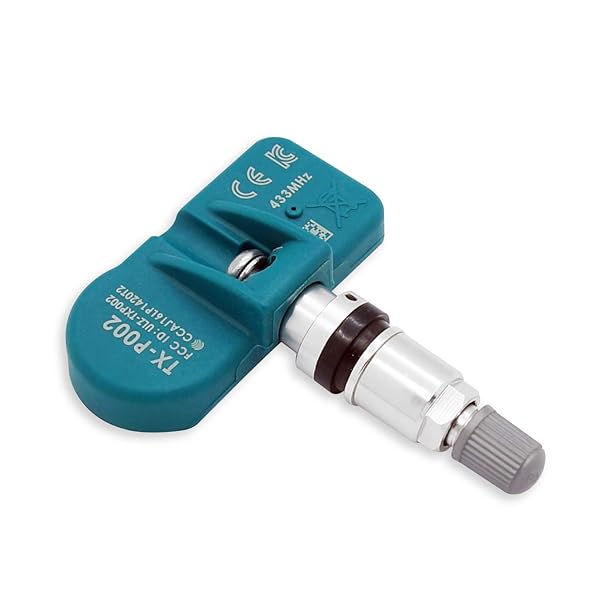 These multi-application sensors can help reduce lost service time, eliminate unnecessary expenses and training and cut down on customer complaints and comebacks.
These multi-application sensors can help reduce lost service time, eliminate unnecessary expenses and training and cut down on customer complaints and comebacks.
Ready to use out of the box
REDI-Sensor is a multi-application TPMS sensor works exactly like the OE sensor. It is pre-programmed and ready for the vehicle relearn procedure as soon as the technician takes it out of the box and installs it in the tire. REDI-Sensor follows the standard OE vehicle relearn procedures, and works with all major TPMS scan tools, including those from ATEQ, Bartec, OTC / SPX, K-Tool (T.I.P.S.) and Snap-on.
Furthermore, REDI-Sensor covers over 85% of all vehicles in North America with only three sensor part numbers and replaces over 140 OE sensors.
Video from REDI-Sensor
 RS232 interface
RS232 interface Tire pressure and temperature monitoring system (TPMS) TM508T22 with internal sensors used
for trucks with up to 22 monitored wheels.
The TPMS kit can be ordered with any number of pressure and temperature sensors from 6 to 22 or more.
The sensors have their own fitting with a nipple and are mounted in rims instead of regular nipples. Sensors continuously measure pressure and
tire temperature and transmit data to the display via radio.
Information about the pressure and temperature in each tire is displayed on the display in turn cyclically.
If the readings go beyond the set values, an audible signal
indicates a problem tire.
Sensors can be linked (programmed) to any positions on the display (according to the instructions).
Non-replaceable battery built into sensors (3 volts), service life - at least 5 years.
The display is attached to the windshield with a suction cup. It has a built-in battery that allows you to work for a week without recharging. For power and recharging, there is a micro-USB connector and a cable.
It has a built-in battery that allows you to work for a week without recharging. For power and recharging, there is a micro-USB connector and a cable.
A distinctive feature of this TPMS is the ability to connect to GPS/GLONASS trackers
and vehicle monitoring systems via RS232/RS485/Bluetooth/CAN-bus J19 interfaces39.
The TM508T22U system is supported by NAVTELECOM equipment.
In this case, the display is connected by a cable to the equipment installed in the cab (GPS/Glonass) and transmits tire pressure and temperature data to the monitoring system, and can also be powered via the same cable. The display supports the RS232 interface.
Instead of a display, separate receivers can be connected to the monitoring equipment: RP03U for RS232 interface,
RP02U6 - RS485, RP03B - Bluetooth, TC02 - CAN-bus (J1939). They receive signals from sensors and transmit data to the monitoring system via the appropriate interfaces, they can work both instead of the display and in parallel with it.
The range of the radio signal from the sensors depends on many factors, such as the design of the vehicle, the nature of the load and the presence of interference from extraneous sources. To increase the reliability of operation, you can purchase the repeater , which is usually installed in the middle or rear of the vehicle and is connected to the on-board network (plus and minus), for example, to the parking lights.
TPMS system set:
Display - 1 pc.
Holder with suction cup - 1 pc.
Internal pressure and temperature sensors with nipple - order quantity
Adapter for charging the display from the cigarette lighter 12/24 V - 1 pc.
RS232 cable - 1 pc.
Repeater and receivers - optional.
Instruction manual in Russian - 1 pc.
Technical data:
Pressure measuring range: 0 - 13 Bar
Accuracy: +-0.1 Bar
Temperature measurement range: -40...+85 degrees C
Accuracy: +-3 degrees C
Operating air temperature for sensors: -40. ..+85 degrees C
..+85 degrees C
Operating air temperature for display: -20 ...+80 degrees C
Operating frequency: 433.92 MHz
Display supply voltage: 12/24 Volts
Maximum display supply current: 500mA
Display weight: 138 g
Display dimensions: 116x68x25mm
Sensor weight with nipple: 72 grams
Sensor dimensions: 110x60x21mm
Box dimensions: 25x17x7cm
1 year warranty
(does not cover batteries in sensors)
| Country of origin | China |
| Brand | no brand |
| Type | Tire pressure sensors |
1. How does the INCAR TPMS system work?
How does the INCAR TPMS system work?
Tire pressure monitoring systems continuously monitor tire pressure using sensors located either inside or outside the tire. The information collected by the sensors is transmitted wirelessly to the on-board display, which displays real-time tire data and alerts the driver when tire pressure or temperature is outside a predetermined level.
2. Why do I need a tire pressure monitoring system?
Both low and high tire pressure lead to excessive fuel consumption and increased tread wear. INCAR TPMS saves you money and ensures safety by preventing wheel explosions, especially on the highway.
3. Does INCAR TPMS have a warranty?
Yes, the INCAR TPMS pressure and temperature monitoring system comes with a standard 12-month warranty on defective parts - except for replacement batteries, which can run out faster under heavy use in freezing temperatures. Batteries are not covered by the warranty in any case, but they are fully functional at the time of delivery.
4. Does INCAR TPMS measure pressure and temperature?
Yes, unlike some other systems that simply measure pressure, the INCAR TPMS also measures the internal air temperature in each tire and alerts you when the temperature rises significantly. This can be an advantage on vehicles that are idle for long periods where the brake caliper can stick after the first application and cause the wheel to seize. Also, the temperature value affects the calculation of critical pressure and the decision to signal danger, especially in winter.
5. How accurate is INCAR TPMS?
Our sensors are very accurate - each goes through a certified laboratory, including for electromagnetic immunity. Tire pressure is measured with an accuracy of +/-0.1 atm., temperature +/-3°C. Pressure and temperature can vary greatly from wheel to wheel depending on many factors such as sunlight on one side, vehicle load, camber/toe, brake force. Even light racing cars create higher tire pressure on the inside when cornering, and trucks even more so.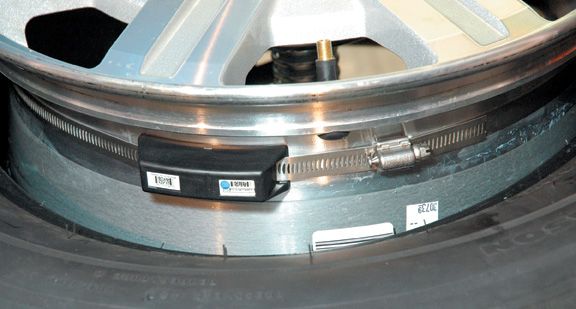 In addition, the presence of temperature compensation allows us to talk about the stable accuracy of pressure measurement, regardless of the air temperature in the tire in the range from -40 to +45°C.
In addition, the presence of temperature compensation allows us to talk about the stable accuracy of pressure measurement, regardless of the air temperature in the tire in the range from -40 to +45°C.
6. Is low tire pressure easy to spot?
The tire is under load and it is impossible to visually diagnose low pressure in it, therefore it is recommended to check each tire monthly with a pressure gauge. INCAR TPMS eliminates this procedure.
7. Why do tires lose pressure as they are used?
Many factors affect tire pressure, including changes in ambient temperature and tire damage (cuts, punctures). The pressure drops by about 0.12 atm. when the ambient temperature drops by 10°C. In addition, the wheels simply lose up to 0.1 atm. per month, since the air naturally escapes through the contact between tire and rim.
8. How much air should I put in my tires?
Always set the normal pressure in the control system to the same as recommended by the tire manufacturer for the accepted operating conditions (for example, at 25°C), and inflate the wheel in the same way.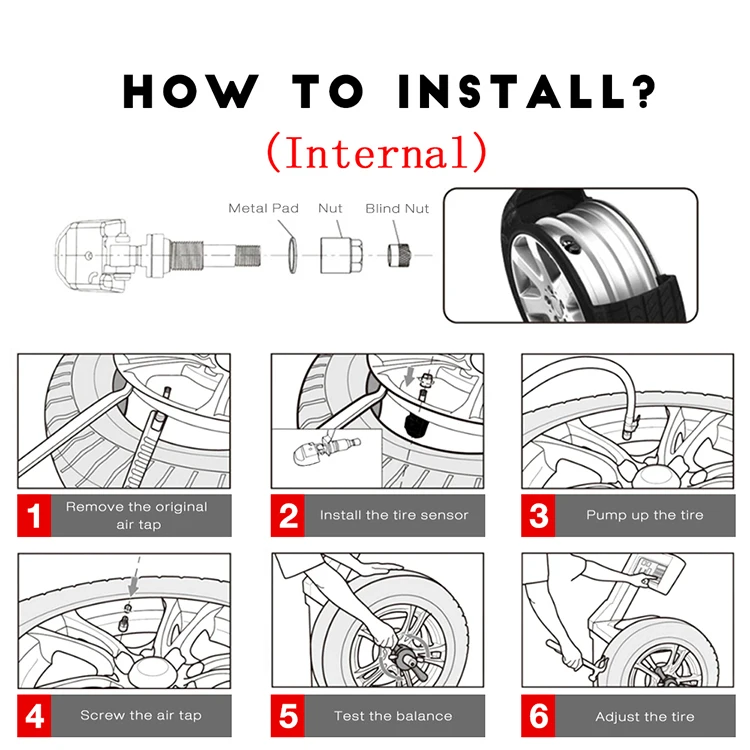 If you set the driver's display to 7 atm., And inflate the tire to 7.2 atm. "For good luck", this will only provoke a false alarm of the sensor.
If you set the driver's display to 7 atm., And inflate the tire to 7.2 atm. "For good luck", this will only provoke a false alarm of the sensor.
9. Is it possible to cross the ford in a car with sensors installed on its wheels?
All sensors of the INCAR TPMS range are made completely waterproof, with IP67 protection. This means that they can be submerged to a depth of 3 m for 10 minutes. Therefore, the river ford will not damage the equipment. But you should be careful on the high pressure washer and avoid close direct impact on the high pressure jet sensor, so as not to damage the valve.
10. Can I set different pressures for each tire or axle?
Of course, different axles can be set to different pressures, for example for tractor and trailer, or for front and rear axles. There are no barriers to separate settings.
11. What is considered a high tire temperature?
In general, a tire is at any temperature at which it operates safely. The operating range is always specified by the manufacturer. Excluding deep negative temperatures, which are not achieved in real life, consider the extreme case of wheel jamming and tire temperature rise from asphalt friction. Since the critical pressure deviation is set to 10%, in absolute numbers for a truck, this means approximately 1 atm. According to Charles's law, the air in the tire will be 100°C hotter than normal. This value is considered high - the driver will receive an alarm, although in practice it is quite safe to exceed 150 ° C.
12. Do I need a special tool to install the sensors?
No tool required for all external sensors.
13. What is the diameter of the sensors?
The diameter of the external pressure sensors is 24-29 mm depending on the model and the presence of the anti-removal cover.
14. Is it easy to install the sensor on the inner rear wheels of the truck?
If you can access the valve stem, you're good. It may not hurt to install a steel valve extension - rubber is not recommended, as centrifugal force can cause the valve to fail at high freeway speeds.
15. Will the system monitor pressure in a spare tire that is not spinning?
There is no reason why the INCAR TPMS sensor will not work on the spare tire - no rotation is required for its operation, a slight vibration is enough.
16. If you temporarily remove the sensor to inflate the wheel, will you have to look for the sensor again using the driver display?
You don't have to reboot or work with the display, you just need to wait for it to update. As the display cycles through all the sensors, it will receive an update from any of them within minutes of the pressure control system being activated.
17. If I put pressure sensors on only part of the wheels, can I add the missing ones later?
Yes, you can add more sensors to your system as needed. The total number of sensors recognized depends only on the driver display model.
18. Can different INCAR TPMS sensor models be used on the same truck?
Yes, of course, you can put any sensors of our system in any configuration on the vehicle, they will not conflict with each other and the system will work correctly.
19. Can I use tire valve extensions?
Most tire valve expanders work fine with INCAR TPMS, but be aware that adding an extra link to a working system only complicates it and may cause an incorrect alarm due to a loose connection of the extension to the sensor.
20. Will the sensors work with a stainless steel valve extension?
Yes, a valve extension is a common feature when installing a pressure monitoring system. It is very important that all your add-ons are attached to the disc properly, and not just sticking out of the wheel as they should.
21. Can I use a rubber valve extension to mount the sensor?
In general, unless otherwise required, steel valve extensions are recommended. There are 2 types of extension: one goes through the rubber stem and clips on the edge of the rim, the other sticks to the rim and supports the rubber stem on the side. The main problem with rubber extensions is that they run through a metal rim. In case of unsuccessful installation and vibration, the rim may begin to fray the valve extension. There are many factors that can influence your decision whether or not to use a rubber extension sensor - we always recommend that you consult a specialist to determine on the spot what is best for your application.
There are 2 types of extension: one goes through the rubber stem and clips on the edge of the rim, the other sticks to the rim and supports the rubber stem on the side. The main problem with rubber extensions is that they run through a metal rim. In case of unsuccessful installation and vibration, the rim may begin to fray the valve extension. There are many factors that can influence your decision whether or not to use a rubber extension sensor - we always recommend that you consult a specialist to determine on the spot what is best for your application.
22. Are the sensors firmly attached to the valve? Perhaps it is worth using additional means to secure them?
Practice has shown that external pressure sensors fit tightly on the valves and never get lost by themselves. Any attempts to stick them will lead to problematic removal of them in the future.
23. Do I need to re-balance the wheels after mounting the sensors?
The heaviest sensor weighs less than 15 g and does not significantly affect wheel balance.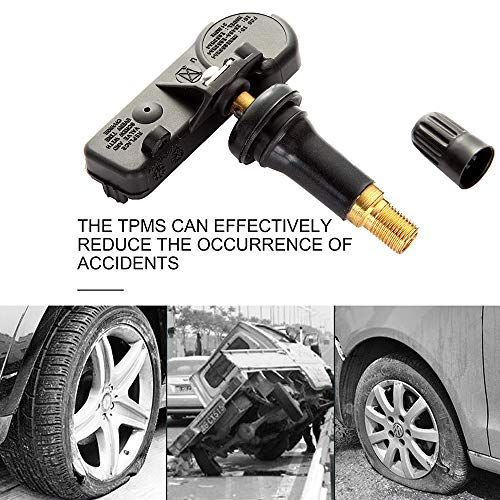
24. Do I have to enter special codes for each sensor when setting up?
Each sensor is programmed with its own unique code and the Driver Display automatically recognizes each sensor with this code when it is installed on the wheel.
25. I have 4 sensors on 2 different trailers, will the system automatically switch to the correct trailer after attaching it?
You will need to install a repeater on the front of each trailer. The repeater will store the data of "its" sensors and will transmit them to the driver's display as soon as it appears within its range.
26. How often do sensors report tire pressure and temperature, is this enough for safety?
Information on the driver display is updated every minute - these are the settings in the system, although even 5 minutes is enough for a proper level of safety according to statistics. The sensors in the tires are independent and do not need to be synchronized. The program scrolls cyclically on the display the current information about the tires in which the sensors are installed, the standard time for displaying data from one sensor is 5 s.
The program scrolls cyclically on the display the current information about the tires in which the sensors are installed, the standard time for displaying data from one sensor is 5 s.
27. Will the INCAR TPMS system conflict with the factory-installed tire pressure monitoring system?
If your factory installed system is built with internal sensors (i.e. mounted on the wheel hub inside the tire), then there will be no problem. It doesn't always make sense to mount a second system, only if you want to be alerted to tire temperature violations or want to achieve more accurate tire pressure monitoring by taking into account temperature fluctuations. This issue requires separate consideration by a specialist.
28. Can I combine sensors from other manufacturers with INCAR TPMS?
It is not recommended to mix components from different systems. We cannot guarantee that they will work properly or even with each other.
29. What is the distance of reliable signal transmission from the sensor to the display?
What is the distance of reliable signal transmission from the sensor to the display?
The TPMS signal transmission distance for long vehicles can be up to 15 m. But in each case, tests are required because the trailer or trawl can distort the signal from the sensor.
30. Will these devices affect the operation of a 2.4 MHz wireless camera?
No, the INCAR TPMS pressure monitoring system's communication frequency is different, your camera will function normally.
31. Will my phone's Bluetooth affect the blood pressure monitoring system in any way?
The Bluetooth device does not affect or interact with INCAR TPMS components in any way.
32. Will a GPS device such as a car navigator or other interfere with the driver's display and vice versa?
Any GPS device can be located close to the INCAR TPMS equipment, they do not affect each other in any way.
33. The valves are located in the middle of one of the holes in the rims. Can I use an anti-theft sensor?
The valves are located in the middle of one of the holes in the rims. Can I use an anti-theft sensor?
Without seeing the wheel, it's hard to say - it all depends on the bore diameter. The TPS-1 anti-removal sensors have an internal diameter of 24 mm (without protective sheath) and an external diameter of 28 mm. Many prefer to use them without the anti-removable housing and simply screw the sensors onto the valve by hand. But the design of the key is such that it will easily fit into the hole in the rim, and most likely you will not have to sacrifice the safety of the equipment.
34. Will I receive an alarm before a tire explosion or other dangerous situation occurs?
Yes, when a tire begins to lose pressure or overheats and the pressure rises critically, you will receive a sharp audio-visual alarm on the driver display and a precise indication of the tire in danger. On a frosty morning, it is possible that the tire temperature is too low and the system sounds the alarm - but the tire just needs to warm up after starting to move.
35. Will the INCAR TPMS monitor the tires in a parking lot with the engine off?
No, if the sensor is not vibrating and the driver display is off, the tire pressure is not monitored - unless it is out of range. But if the tire pressure or temperature changes suddenly while the car is parked, the sensor comes to life and sends an alarm to the driver's display. If it is turned on, you or the parking guard will receive a danger alert, if it is turned off, only after turning it on.
36. How much must the tire pressure change before the alarm sounds?
Some control systems fix the critical pressure deviation as a percentage of the standard and strictly prescribe it in the settings. In contrast, INCAR TPMS is designed so that you can decide when to be notified. For example, when driving a truck into a hot climate zone, you can change the critical temperature settings. At the beginning of operation, we recommend setting a signal for a pressure deviation of 10% of the standard value in any direction.
37. I don't want to remove the sensor every time to inflate the wheel, is there a solution that suits me?
There are two of them. First, you can install one of two types of internal sensor - TPS-22 or TPS-22. Secondly, we offer a manifold for external mounting, through which we can inflate the tire without removing the sensor. But you must be sure that this equipment will not attract intruders and they will not be able to steal it while the car is parked.
38. What is the typical battery life of sensors?
The INCAR TPMS uses high performance German IC boards that are designed to maximize sensor output power while maintaining battery life. The maximum service life of the non-replaceable battery of the internal sensor is 5 years, the external sensor is 2 years. But ultimately, the life of a CR1632 battery depends on its workmanship, ambient temperature, and vehicle usage. The colder the air, the shorter the battery life. Replacement batteries for external sensors are not covered by the warranty.
Replacement batteries for external sensors are not covered by the warranty.
39. Will your system work on travel trailers?
Of course, the INCAR TPMS system works on all types of recreational vehicles, as well as trailers of any permitted length. But it may be necessary to use a transceiver to amplify the signal if the trailer is very bulky or technologically complex. Everything will be determined by the practice of operation. In any case, you will not immediately notice in the rear-view mirrors that something has happened to the trailer vehicle if you are driving a car, so the control system can save the life of people riding in a trailer.
40. Is it easy to remove the sensors if you plan to take a long break from the car?
External sensors are easy to remove. All external sensors do not require a tool. It will be more difficult with the internal ones - it will require re-beading the wheels and the corresponding dismantling work.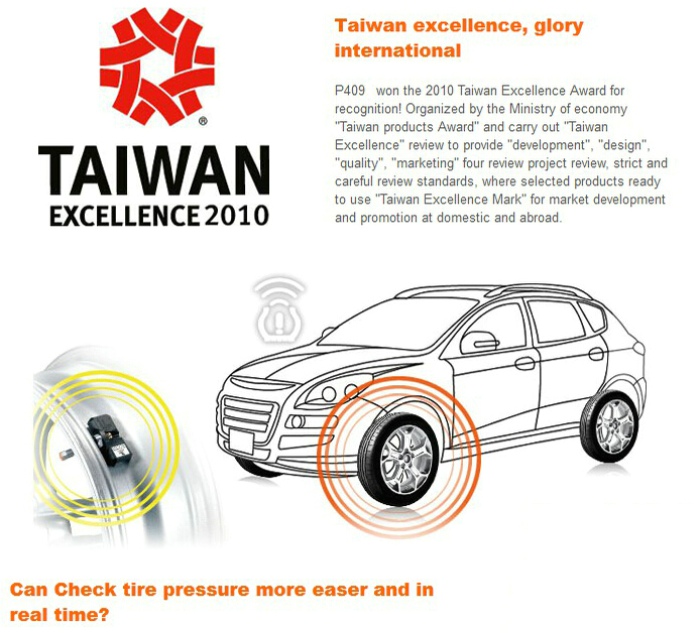
41. How is the driver's display mounted in the cab?
The self-tapping bracket can be considered the most reliable, but the delivery also includes a suction cup, which can come off at high glass temperatures or as a result of wear on the contact surface. Sometimes the driver's display is placed in special boxes (U-shaped supports) on double-sided tape, within reach, but this method of attachment is not provided in the delivery.
42. Can the driver's display be mounted flush on the dashboard?
The speaker of the display is located on its back surface, as well as the mating part of the mount, so the surface of the device is not completely flat and must be at least partially open. However, some users contrive to fix the display in such a way so as not to lose sound and the device is not at risk of falling. It should be noted that there is hardly anything more reliable than standard fastening methods.
43.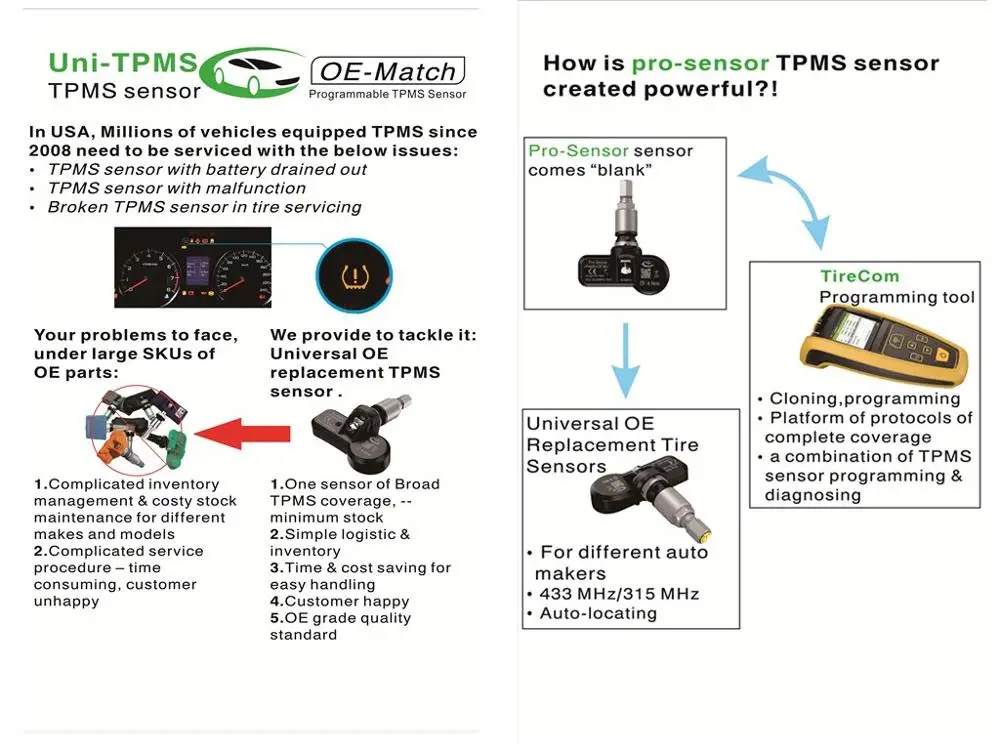 Does the driver display come with a charger?
Does the driver display come with a charger?
Either a 12-volt charging cable connected to the cigarette lighter or an RS232 cable for integration with various monitoring systems and at the same time powering the display is included. The capacity of the built-in lithium-ion battery is enough for several days of battery life.
44. Do I need a signal amplifier (transceiver)?
It used to be easy to determine if you needed a transceiver - if the vehicle is longer than 15 m, then you need it. Diesel engines these days have so many electronics that interference is possible. Also, the quality of the signal is affected by the structure of the frame and the amount of metal on different sides of the cab. In the general case, this question can only be answered based on the results of the practical operation of the system. You can try to work without a transceiver, but if the signal from the sensors is lost, you will need to connect the transceiver to the on-board 12 V network.